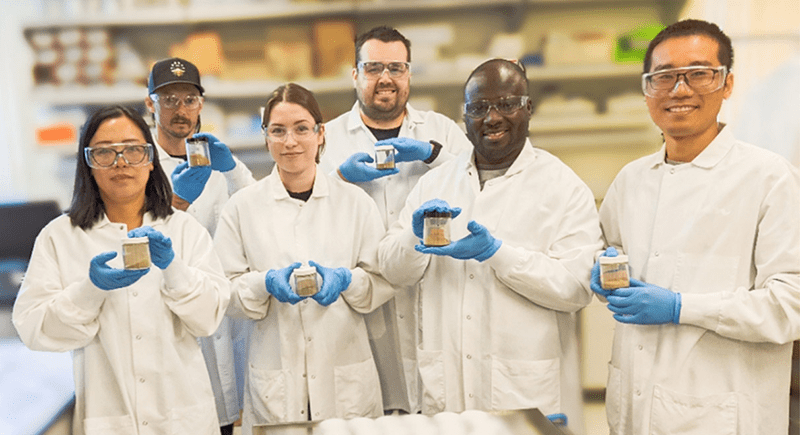
August 3, 2023 Lignin separation method could make renewable material profitable
A novel method to extract lignin could help spin wheat straw into gold. Lignin produced using the new method was color-neutral, odorless and homogenous, an advance that could make this carbon-neutral material a more viable candidate for development of high-value products.
Reporting in the Proceedings of the National Academy of Sciences, the Washington State University researchers extracted up to 93% lignin with up to 98% purity from wheat straw, producing a significant amount of material in a uniform way that could make it more attractive for industry use.
“This method allows us to extract lignin from plant material in its native form and at a high yield,” said Xiao Zhang, professor in WSU’s Gene and Linda Voiland School of Chemical Engineering and Bioengineering, who led the work. “We were able to demonstrate to industry that it is possible to make color-neutral and odorless lignin, and we can make quite a bit of the material to begin evaluating its applications.”
Lignin is the second most abundant renewable carbon source, making up about 30% of the non-fossil fuel-based carbon on Earth. It is in all vascular plants, where it forms cell walls and provides plants with rigidity. Lignin allows trees to stand, gives vegetables their firmness and makes up about 20%-35% of the weight of wood. The material holds great promise as a precursor for biobased materials and fuels, but it is also notoriously difficult to extract from plants.
The material is usually separated during papermaking and biorefining, but these processes often contaminate and significantly alter lignin’s chemical and physical properties, decreasing its value. So most lignin is either burned to produce fuel and electricity or used in low-value products, such as for cement additives or as a binder in animal feed. Producing a more homogenous lignin provides the opportunity to pursue high-value material development to replace petroleum-derived plastics and polymers.
“Because of its heterogeneity, lignin can’t be used as a valuable material despite centuries of effort,” said Zhang, who holds a joint appointment with Pacific Northwest National Laboratory. “The saying has been that ‘you can make anything out of lignin, except money.’ There’s so much heterogeneity in the molecules that nobody can reliably make things out of it.”
In their work, the researchers used a solvent to separate the lignin from wheat straw and were able to preserve and control its key properties, producing a more uniform molecule with a consistent molecular weight that makes it more useful for industry. The lignin extracted was light-colored, which is more like the lignin that exists in nature.
Because it is an electron-rich compound, the lignin had a strong affinity for the solvent, and the electron interactions allowed the researchers to extract it with minimal chemical reactions, which protected its natural molecular structure that is so often easily damaged in chemical separations.
WSU’s Office of Commercialization has filed a provisional patent and will assist the researchers for the scale-up and eventual commercialization of this technology. To make it more viable for industry applications, the research team is working to decrease the lengthy processing time and the amount of purification chemicals needed. The work was done in collaboration with Edoardo Apra, a computational scientist from PNNL, and Professor Art Ragauskas from University of Tennessee, Knoxville. It was supported by the National Science Foundation and the U.S. Department of Agriculture National Institute of Food and Agriculture as well as WSU’s Commercialization Gap fund.




